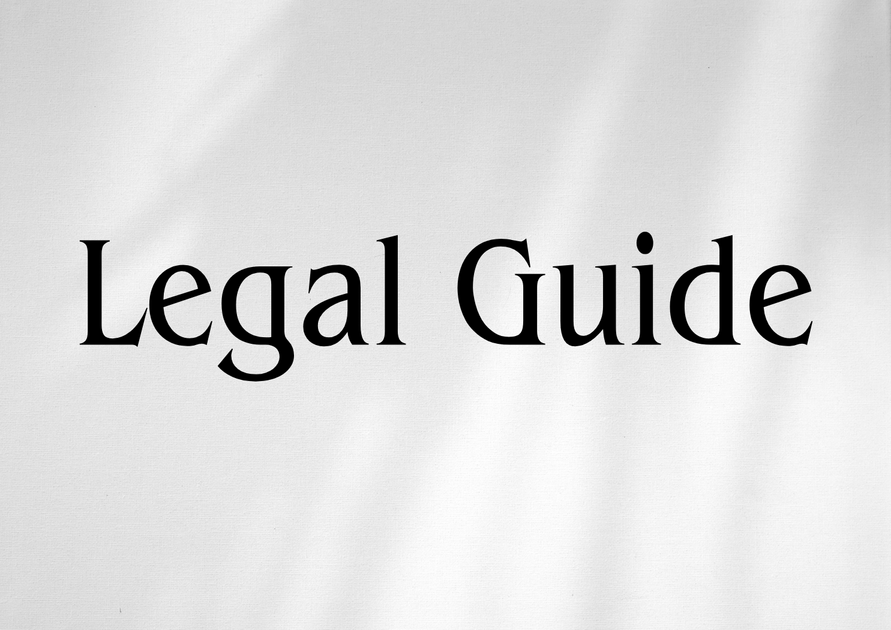Introduction: The Legal Labyrinth of AI Accountability in the UAE
The deployment of artificial intelligence (AI) in the United Arab Emirates (UAE) has swiftly migrated from futuristic ambition to everyday reality. From algorithmic decision-making in banks and hospitals to autonomous vehicles and customer service bots, AI’s utility is now inseparable from business outcomes. But as companies embrace these technologies, a critical question demands attention: Who is liable when AI makes a mistake in the UAE?
Recent updates—most notably, Federal Decree-Law No. 44 of 2021 Regarding the Regulation and Use of Artificial Intelligence and developments projected in UAE Law 2025—have introduced new compliance frameworks, requiring organizations to rethink liability, risk, and governance for AI systems. For executives, compliance officers, legal practitioners, and HR managers, grasping these legal nuances is essential to avoid costly litigation, regulatory action, and reputational harm.
This in-depth advisory dissects the evolving landscape of AI liability in the UAE, providing actionable guidance, regulatory insights, and practical steps for businesses to stay compliant and thrive in a rapidly shifting legal environment.
Table of Contents
- UAE Legal Landscape Defining AI and its Governance
- Key Regulatory Framework Federal Decree-Laws and Cabinet Resolutions
- Models of AI Liability in UAE Law
- Comparing UAE AI Liability Laws Past and Present
- Practical Scenarios AI Mistakes and Legal Responsibility in Practice
- Risks of Non-Compliance and Legal Penalties
- Best Practice Compliance Strategies for Organizations
- Conclusion Advancing Governance and Legal Compliance
UAE Legal Landscape: Defining AI and its Governance
Understanding the Regulatory Context
The UAE has positioned itself as a regional and global leader in artificial intelligence adoption and regulation. Official sources such as the UAE Ministry of Justice and the UAE Government Portal highlight efforts to create a trustworthy, innovation-friendly environment—balancing innovation with robust governance and legal accountability.
Defining AI in the Eyes of the Law
Federal Decree-Law No. 44 of 2021 offers a comprehensive definition: “AI systems are software or hardware systems exhibiting intelligent behaviour by analyzing their environment and taking actions with some degree of autonomy to achieve specific goals.” This statutory language anchors subsequent obligations and liabilities for developers, deployers, and users of AI systems in the UAE.
Scope of Application
The law applies to developers, operators, product owners, service providers, and, in certain cases, users whose decisions are directly or indirectly influenced by AI. This multi-faceted approach underpins the foundation for determining liability when AI fails or produces harmful results.
Key Regulatory Framework: Federal Decree-Laws and Cabinet Resolutions
Principal Legal Instruments
| Law/Regulation | Reference | Relevance to AI Liability |
|---|---|---|
| Federal Decree-Law No. 44 of 2021 | Official Gazette Issue 707 | Definition, use, and liability of AI in government and private sectors |
| Cabinet Resolution No. 109 of 2022 | AI Regulatory Sandbox | Controlled development and testing of AI solutions—risk assessment guidelines |
| Anticipated Revisions in UAE Law 2025 | Emerging Policy | Expansion of liability categories; introduction of compliance certification requirements |
| General Data Protection Regulation (as reflected in Federal Decree-Law No. 45 of 2021) | Personal Data Protection | AI-driven processing of personal data—privacy liabilities |
Pivotal Legal Principles
- Transparency: Providers and users of AI must offer traceable, explainable outputs (Article 5, Decree-Law 44/2021).
- Duty of Diligence: Organizations are expected to conduct risk assessments, maintain logs, and monitor systems for harmful outcomes.
- Strict and Vicarious Liability: Certain errors trigger automatic responsibility for operators or businesses, regardless of intent or negligence (except where criminal liability is involved).
Models of AI Liability in UAE Law
1. Producer (Developer) Liability
Developers of AI solutions can be held liable for defects in system design, coding errors, and inadequate training of algorithms. This follows the logic in Articles 282–298 of the UAE Civil Code (Federal Law No. 5 of 1985), which address product liability and compensation for damage caused by defective products and services.
2. Operator (Deploying Organization) Liability
The business or entity that deploys or operates the AI system is generally responsible for its performance in real-world settings. Under Article 284 of the UAE Civil Code, organizations may be found vicariously liable for “injuries occasioned by things under their control.” For instance, if a bank’s automated loan approval system wrongly rejects or approves a loan, liability may attach to the bank.
3. End User Responsibility
When users knowingly misuse AI or circumvent safety/operational controls, liability may shift partially or fully to the user (per existing tort and criminal statutes). This provision is referenced in Article 43 of Federal Decree-Law 44/2021.
4. Shared and Layered Liability
Complex real-world scenarios often involve joint liability among developers, operators, infrastructure providers, and even third-party data suppliers. New rules in UAE Law 2025 are expected to formalize the concept of “shared responsibility,” reflecting global best practices.
5. Autonomous AI and Novel Risks
With the emergence of “self-evolving” AI systems, recent legal commentary (Ministry of Justice, 2023) highlights the need for continuous monitoring and contractual allocation of liability—especially if the AI’s harmful conduct was unforeseeable at deployment.
Comparing UAE AI Liability Laws: Past and Present
| Aspect | Pre-2021 Law | 2021–Present (Decree-Law 44/2021 and Beyond) |
|---|---|---|
| AI Definition | Not explicitly defined; general civil and tort law applied | Comprehensive legal definition of AI and scope of regulation |
| Liability Model | Producer or operator, based on negligence/fault | Producer, operator, and (soon) shared/joint liability for AI-influenced harm |
| Obligations | Minimal, case-by-case | Mandatory audits, transparency, traceability, risk management |
| Government Oversight | Reactive (investigate post-incident) | Proactive regulatory framework, licensing, and enforcement |
| Penalties | Generic compensation and fines | Escalating fines; criminal sanctions for gross AI misuse |
Practical Scenarios: AI Mistakes and Legal Responsibility in Practice
Case Study 1: Medical AI Misdiagnosis
A government hospital implements an AI-based diagnostic tool. The AI incorrectly classifies a benign tumor as malignant, leading to unnecessary surgery.
- Legal Risk: Both the hospital (operator) and AI developer may be held liable (Decree-Law 44/2021, Articles 14 and 15).
- Mitigation Strategy: Regular audits, validation of AI algorithms, informed consent from patients, and transparent reporting reduce exposure.
- Compliance Insight: The operator must ensure the AI system passes regulatory health checks and is approved by the Ministry of Health and Prevention.
Case Study 2: Financial Services—Automated Credit Scoring
A fintech company deploys an AI algorithm for loan assessment. Due to biased training data, the AI unfairly denies loans to a demographic group.
- Legal Risk: Operator faces claims under anti-discrimination provisions in labor and banking laws; developer liable if the bias stems from algorithmic flaws (MoHRE guidelines, 2022 update).
- Mitigation Strategy: Implement fairness audits and use diverse training datasets.
Case Study 3: Autonomous Vehicles and Civil Liability
A logistics company utilizes autonomous delivery vans. A software glitch causes a collision with another vehicle.
- Legal Risk: UAE Civil Code Articles 282–298 apply; operator is primarily liable, but recourse against the software developer may follow.
- Insurance Aspect: New auto insurance models emerging to cover AI-incurred damages.
Visual Suggestion
- Placement: Consider inserting a “Decision Map: Determining AI Liability” flowchart to illustrate how liability may shift between parties based on control, usage, and intent.
Risks of Non-Compliance and Legal Penalties
Escalating Enforcement Measures
Federal Decree-Law 44/2021 and anticipated UAE Law 2025 articulate graduated penalty regimes for AI-related infractions:
| Infraction | Penalty Range (2021) | Penalty Range (2025, Expected) |
|---|---|---|
| Lack of Audit Trail | AED 50,000–250,000 | AED 100,000–500,000 |
| Unauthorized AI Use | Service suspension, fines | Service suspension, fines, and blacklist from government contracts |
| Gross AI Misuse Leading to Harm | Up to 2 years’ imprisonment and AED 1M fine | Up to 5 years’ imprisonment and AED 5M fine; civil compensation expanded |
| Privacy Violation | AED 20,000–200,000 (per PDPL 2021) | Up to AED 500,000 plus criminal prosecution |
Additional Risks
- Reputational Harm: Negative media exposure can deter investors, customers, and partners.
- Regulatory Scrutiny: Repeat offenders risk closer supervision and licensing restrictions.
- Litigation and Civil Actions: Victims of AI errors (customers, patients, third parties) are empowered to seek compensation or injunctions.
Best Practice Compliance Strategies for Organizations
To minimize AI liability exposure in UAE, organizations are advised to undertake the following:
| Action Step | Details | Regulatory Reference |
|---|---|---|
| AI Impact Assessments | Conduct risk assessments before AI deployment, covering safety, fairness, and privacy | Decree-Law 44/2021, Art. 8 |
| Audit Trails and Logging | Maintain comprehensive operational logs for investigation and regulatory review | Decree-Law 44/2021, Art. 12 |
| Consent and Transparency | Secure clear end-user consent when AI decisions impact rights or obligations | Decree-Law 44/2021, Art. 15 |
| Training and Awareness | Educate staff and users on ethical AI operation and reporting obligations | MoHRE Guidance 2022 |
| Contractual Risk Allocation | Use clear terms in vendor and partnership agreements to distribute liability | Ministry of Justice Commentary 2023 |
| Regulatory Engagement | Participate in the AI Regulatory Sandbox for pilot projects and compliance feedback | Cabinet Resolution 109/2022 |
Visual Suggestion
- Placement: Compliance Checklist Table for organizations implementing or utilizing AI solutions.
Actionable Recommendations
- Engage legal counsel early in AI acquisition or development projects.
- Assign an internal AI Ethics Officer or Compliance Lead.
- Monitor forthcoming updates to UAE AI law, especially expected revisions in 2025.
- Establish direct lines of communication with sector-specific regulators (e.g., Ministry of Health, MoHRE).
Conclusion: Advancing Governance and Legal Compliance
The UAE’s rapid expansion of AI regulation marks a new era of legal accountability and business opportunity. Clear delineation of liability—across developers, operators, and users—reduces legal ambiguity and supports the safe, responsible adoption of transformative technologies. The upcoming UAE Law 2025 is set to further refine the boundaries of liability, reinforcing the importance of continuous compliance, risk management, and stakeholder education.
As the UAE cements its role as a regional AI innovation leader, forward-thinking organizations should aim for compliance that is not just reactive but proactive—anchored in robust governance, transparency, and ethical foresight. By doing so, businesses can effectively manage legal risks, shield themselves from liability, and foster the sustainable integration of AI into every facet of the UAE economy.
Key Takeaways
- AI mistakes can lead to multi-layered liability—shared between developers, operators, and users.
- The legal landscape is evolving, with stricter oversight and higher penalties on the horizon for 2025.
- Ongoing compliance, clear documentation, and stakeholder training are indispensable for legal safety and business stability.
For tailored consultancy and up-to-date guidance on AI legal compliance in the UAE, organizations are strongly advised to consult experienced legal professionals familiar with the latest decrees and sector-specific regulations.




